SPUR Talk: Political Lessons from London and New York
4:33 PM PST on January 31, 2018
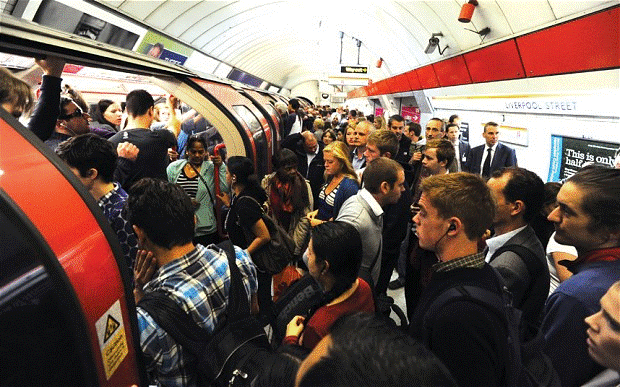
The Bay Areas problems, such as transit overcrowding at rush hour, and complex governance, may not be as unique as we think. All Images from the presentations unless noted.
Note: GJEL Accident Attorneys regularly sponsors coverage on Streetsblog San Francisco and Streetsblog California. Unless noted in the story, GJEL Accident Attorneys is not consulted for the content or editorial direction of the sponsored content.
They may all share the same roundel, but the divisions within Transport for London can be surprisingly parochial, explained Isabel Dedring, currently a director with ARUP, and formerly London's Deputy Mayor for Transport.
"You would not know they all work for the same organization; they would walk out of a room if they didn’t like the people or the data you were providing," she said during Tuesday afternoon's presentation about city governance at SPUR's Oakland location. "Every city I go to, everybody goes 'no you don’t understand, our city is so terrible, it’s really complicated, we have all these different agencies, it’s impossible to do anything.'"

In the Bay Area, urban planners bemoan the region's 27 different transit agencies. But Dedring said no matter how many agencies there are in a region, it still comes down to individual interests and figuring out how to get those individuals behind your project. "It’s complicated everywhere you go."
Margaret Newman, also with ARUP, was formerly Chief of Staff to Janette Sadik-Khan at the NYC Department of Transportation (NYDOT). "NYDOT doesn’t actually run any transportation, except for a few ferries," she explained. And that means dealing with lots of outside agencies.
She said the key to getting things done in New York was to have specific, well-defined goals that the other agencies could buy into--and that meant reaching out to individual department heads within NYDOT and inside other agencies as well. "Inside each agency, there are divisions--so mobility might include people from parking, signalized intersections... lots of different folks," she said. "So bringing those people together was super important."
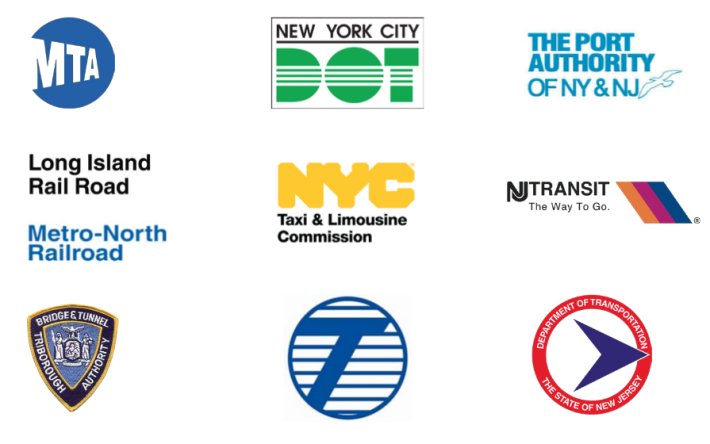
So what does all this mean in practice?
Newman cites the closing of Broadway to motor traffic through Times Square as their proudest accomplishment. But it meant selling the project to automobile interests, such as cab companies. "We sold it by saying the priority was to increase traffic speeds in midtown."
That was accomplished, she said, by simplifying intersections. And since Broadway runs at an angle to the street grid, which caused backups at intersections, it worked--with a bit of help from the economic collapse. "The 2008 economic meltdown, it turns out, was really good for traffic movement."
The other key, she said, was selling it as a pilot. "So we did a nine-month pilot project," which used epoxy gravel, folding chairs, and other quick-to-install materials. Then, after nine months, NYDOT had data to show about how the project was working--which is how they were able to show naysayers that collisions were down and traffic flow had improved. "There's that famous Bloomberg quote, 'in God we trust, all others bring data.' We focused on measurable outcomes," said Newman.
There was an added bonus: after doing a long enough pilot, the city could make the case that a full environmental study wasn't needed to make the changes permanent, since it was now 'existing conditions.' "This had implications all over the city," said Newman.

Dedring has similar prescriptions from London. "Have a clear strategy and priorities," she said, stressing that in getting collaboration transport planners always have to think of individual interests for employees of other agencies as well as the general public. "Don’t say it’s a purple train with great wheels! Transportation people think transportation is really interesting," she said, adding that for most people, it just isn't.
Instead, explain why a transit project is going to solve a problem people care about, such as getting to work faster or gaining access to cheaper housing. She said plans for the extension of the Bakerloo Tube line came at a time when Londoners saw the cost of housing as their biggest single problem. "So we said this isn’t about transport, it’s about delivering 15,000 homes in a relatively poor part of the city." She said the route was based on maximizing access to housing as opposed to the usual business case for extending transit.
In other words, "It's not our job to build something worthy and to tell people they’re bad for not using it," said Dedring. "It's to actually create something people are significantly better off using; they don’t use the Tube because it’s pleasant, they use it because it’s faster from A to B."
As to street design, Dedring agreed with Newman on the importance of pilots. "Just put in some planters and armadillos and say 'oh, it’s just a trial.' Not once has any of these schemes been taken out in my experience."
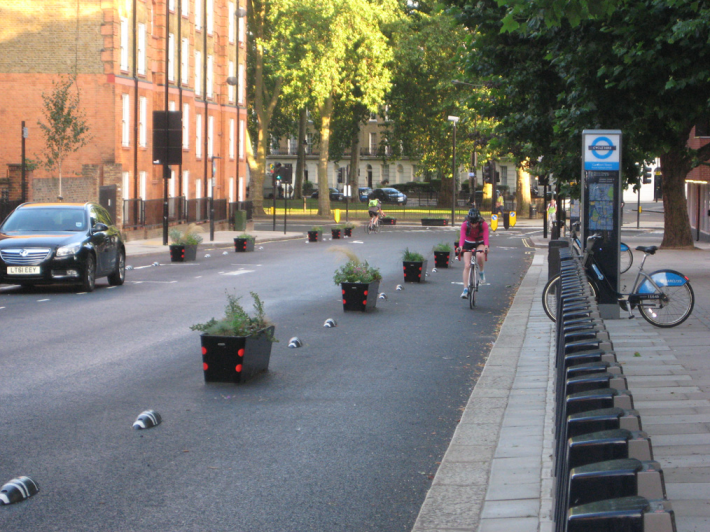
Dedring also said it's important to listen to advocates. She recalled how London's first attempt to build bike lanes, which were more of the typical, striped lanes without protection, failed. "People in the cycling community were going off to Copenhagen and redrawing our designs and putting them online," she said. The cycling community demanded truly protected bike lanes. "What we ended up with in the end were things we never did in the UK before," she said, including bus-boarding islands. "Ultimately we were able to deliver proper segregated lanes."
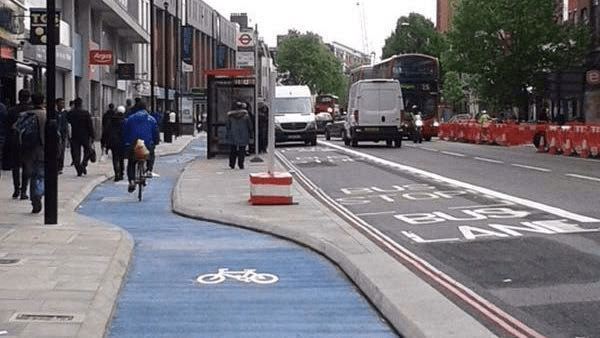
At the end of the day though, both Dedring and Newman agreed it's hard to make progress without a strong mayor who believes in and fights for better public transit and safer, more livable streets.
Newman recalled how New York's Mayor Bloomberg was willing to close Broadway to traffic at a time when that seemed untenable. "In 2009, it was a bold thing to do in an election year."
Ultimately, said Dedring, it's not about political structures and transit agencies, it's about individuals and political leaders. "It’s radically different between administrations." She recalled how London Mayor Boris Johnson took risks after years of inconclusive discussions about extending the Bakerloo line. "Boris was going give a talk, so he just announced that we would build the Bakerloo line by 2030; a great example of where the irrationality of politics can be a good idea."
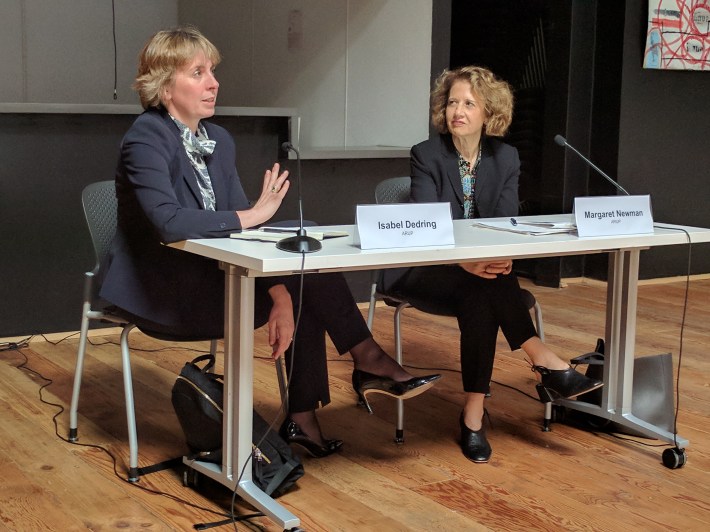
For more events like these, visit SPUR’s events page.
Stay in touch
Sign up for our free newsletter
More from Streetsblog San Francisco
Commentary: Making Valencia Better for Business
Curbside protected bike lanes with curbside parklets deliver on much-needed economic benefits for merchants while ensuring safety for all




